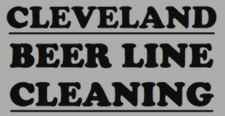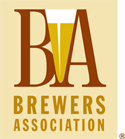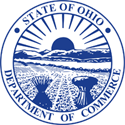Beer Line Cleaning

Cleveland Beer Line Cleaning procedures include:
- Pressurized soak and recirculation with food-grade hydroxide or acid cleaning solution*
- Clean-water rinse to remove residue
- Removal, hand-cleaning and sanitation of couplers
- Disassembly, hand-cleaning and sanitation of faucets and shanks
- EPA bacterial analysis to ensure proper sanitation
Proper beer line cleaning will result in optimal tap system performance, which preserves the intended quality of draught beer.
*Hydroxide and acid line cleanings are performed in accordance with Brewers Association protocol using a 3% Sodium Hydroxide (NaOH) or Phosphoric Acid (H3PO4) solution.
Goals of Beer Line Cleaning
Three goals must be achieved when cleaning any tap system:
- Removal of nutrient residues (sugars, proteins, and minerals) that adhere to the interior of beer lines.
- Removal of bacteria that are harbored by nutrient residues inside of beer lines.
- Removal of all line cleaning solution. Beer line cleaning chemicals are not poisonous or toxic and have no known chronic health effects. They are classified as “caustic” and may cause minor tissue damage with symptoms being burning, itching, and redness of the effected area.
Cleaning cycles are run for a minimum of 15 minutes per beer line. Cleveland Beer Line Cleaning technicians are trained and instructed to visually inspect for nutrient residues (“beer scale”) and to pH test both cleaning solution and rinse water to ensure all cleaning solution is removed.
We also provide bar staff with the appropriate tools and knowledge so that together we ensure draught beer quality and public health and safety.
Added Benefits of Beer Line Cleaning
In addition to providing beverage retailers with affordable line cleaning done right, Cleveland Beer Line Cleaning technicians administer bacterial counts to determine bacterial levels each time we clean. Our objective is to hold microbial levels at a non-infectious concentration and to alert retailers if bacterial levels rise.
Not only is this a simple and effective way to ensure safe and sanitary service, it also enables us to detect system malfunctions, such as a loss of refrigeration, which would be indicated by abnormally high bacterial levels.
How Line Cleaning Increases Draught Beer Sales
In a study published by Brewers Association economists, improved retail draught beer operation led to improved draught beer sales. In reviewing statistical analyses of profits vs. line cleaning, evidence indicates that proper line cleaning results in an average of 4-7% increased draught beer sales.*
Proper beer line sanitation encompasses efforts made by both beer line cleaners and bar staff. The Brewers Association and the Ohio Division of Liquor Control both recommend that routine caustic line cleanings be performed “no less than once every two weeks,” and that acid cleanings are performed quarterly (once every three months).
Cleveland Beer Line Cleaning procedures strictly adhere to the guidelines set by the BA and the State of Ohio, and we continue to advance our techniques based on scientific findings. We believe the greatest way to ensure optimal beer line sanitation is by educating line cleaners and bar staff alike. With a primary focus on the presence of microorganisms and the implementation of proper aseptic techniques, our research fuels our training, and thus allows us to ensure appropriate sanitation standards are met.
*These findings were presented at the 2013 “Brewers Association Power Hour: Economics of Draught Beer Quality” and are published in conjunction with the Draught Beer Quality Manual.



